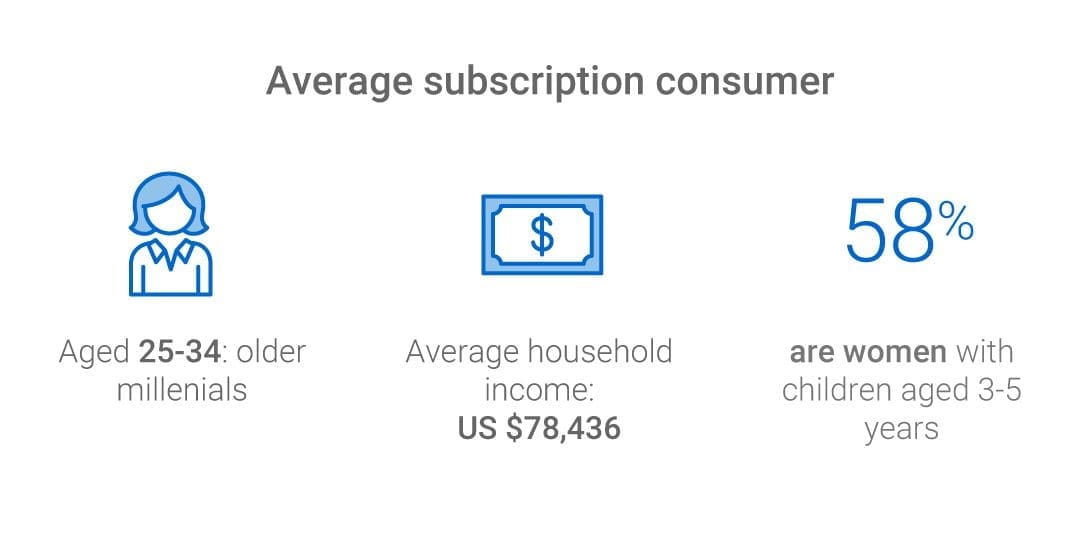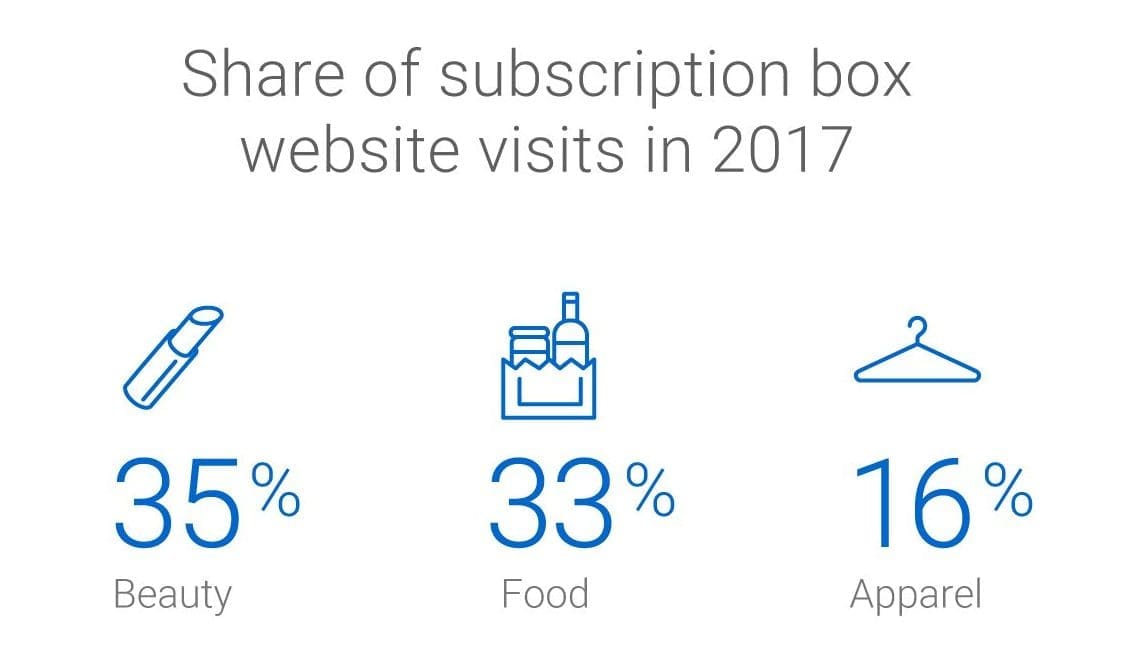The subscription model for E-Commerce has made its way into the main stream of online consumer purchasing, offering convenience and consistency of service. Considering the way in which healthcare products such as skin care, prescriptions, and cosmetics are consumed, subscription services are becoming increasingly popular among healthcare consumers.
Subscription Based Services are the New Trend in E-Commerce
In just a few short years, the number of visits to subscription websites has exploded, from less than 1 million in 2013, to an astounding estimate of 40 million in 2017*. This boom is leading companies to consider how to incorporate subscription-based services into their future business plans.
 *
*
Who are the average subscription consumers?
 *
*
- Is between 25-34 years old
- Has an average household income of USD $78k
- Are nearly 60% are women with young children
- Exhibit behaviour that demonstrates a high level of comfort with personalized e-commerce shopping experiences
These statistics demonstrate the sheer scale of the subscription services market.*
Of course, the future will undoubtedly see these trends with subscriptions evolve even further, going beyond consumer-packaged goods and making their way in to healthcare services, too.
How Subscription Services are Disrupting the Healthcare Industry
Consumer purchase behaviour has been evolving substantially over recent years due to new technologies, digital health services and disrupters like Amazon healthcare that are revolutionizing the Healthcare industry. Speed, convenience, and transparency are all much more prominent in the decision-making process for many consumers, which helps to explain the booming popularity of subscription services.
For businesses competing in the healthcare sector, this change in behaviour is having serious ramifications on how they get their products and services to the consumer. With fewer in-store visits, healthcare companies and services have to reconsider their business model.
Health coaching, primary care services, over-the-counter and prescription drug fulfillment are just a few of the many ways that subscriptions are being leveraged by forward-thinking brands in the healthcare industry.
Furthermore, automation technologies are accelerating these trends and enabling greater efficiencies to deliver even more convenience for consumers. However, for subscription services to be successful in a healthcare environment, consistency and reliability in fulfillment are critical. Companies utilizing a subscription services model must have solid fulfillment processes and adequate logistics resources, ideally with significant kitting capabilities and warehousing facilities that can accommodate the required specifications for medical supplies.
Licensing and regulatory compliance are also extremely important factors that must be considered by companies in the healthcare industry. Many healthcare products are covered by strict regulations on how they must be packed and shipped direct-to-consumer, and failure to comply can pose substantial risk especially for pharmaceutical companies.
Beauty boxes, prescription fulfillment, and health coaching leading the way.
 *
*
Currently, beauty products are dominating the subscription box model. Cosmetics, skin care, hair care, and general hygiene are well suited to the subscription model due to their consumable nature, the need for regular replenishment, and the consumer’s value of the convenience that subscriptions offer.
Health coaching, health care services, and preventive healthcare products, are also growing in popularity with the subscription model, as these products and services are used often and at regular intervals. Furthermore, some hospitals and healthcare facilities are adopting subscription models for equipment by allowing them to regularly update to new devices and technologies through smaller incremental investments.
What does it take to launch a subscription model in Canada?
For healthcare companies that are interested in adopting subscription fulfillment services within Canada, it’s essential to have realistic expectations on what is required and the timelines that can be anticipated as part of the setup and startup process.
For starters, having a sensible timeline for implementation will help ensure that the necessary resources are in place, training can be conducted, and systems within the distribution centre are able to handle the subscription fulfillment each month/week. Another common issue we see when implementing a new subscription model is with the IT systems as the shift to automatic replenishment may cause compatibility problems within your current protocols. In order to ensure a successful launch, a proper test period or pilot of the subscription model will help your company work out all the kinks before you launch to the public. With that being said once your company does launch a subscription based service, shipping policies, delivery timelines, and fee structures need to be clearly communicated to meet and manage customer expectations.
During the early stages of a subscription services startup, it’s likely that only one distribution centre (DC) will be needed to manage the volume, but this is highly dependent on factors such as how closely linked the DC is with the planning of upcoming promotions and marketing efforts. If these two elements are not in sync, serious problems can arise, especially during peak season when shipment volumes and customer expectations are both higher than usual.
If you are starting your healthcare operation within Canada, Health Canada’s regulations will need to be taken into consideration within the implementation plan. Schedules can quickly be thrown off in the event that compliance issues arise or regulations change. If you are looking for help managing regulatory compliance, click here to read about our healthcare technical solutions.
A 3PL should always be ahead of the changes and trends in subscription & membership-based business models.
The healthcare companies that will achieve the greatest success with subscription models will be the ones that have partnered with the right 3PL provider. As an established expert in e-commerce fulfillment, SCI’s facilities, personnel, and technology are able to ensure that subscription services function perfectly at all times, even during the highest points of your peak seasons. SCI warehousing and transportation resources are capable of effectively managing any type of healthcare product, from consumer-packaged goods to advanced technology and equipment.
SCI helps deliver a consistent and reliable subscription experience for healthcare consumers. By implementing systems and technology throughout the supply chain that track the entire process from warehouse to consumer, visibility is gained in to the effectiveness of fulfillment operations. This visibility provides insights and helps guide the progression of the subscription services model for greater impact over time. SCI also has all the proper licensing to ensure that your products will meet the regulatory standard required by Health Canada.
SCI has helped many organizations with subscription services, including warehousing & distribution, fulfillment, automation and other supply chain services, all customized specifically for the healthcare industry. Contact our healthcare team today to see how we can help your organization.
*Uncovering the e-commerce subscription box opportunity in the U.S – Canada Post 2018